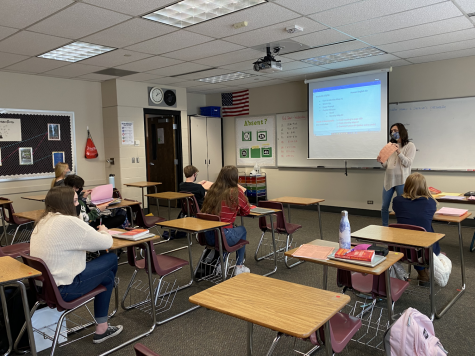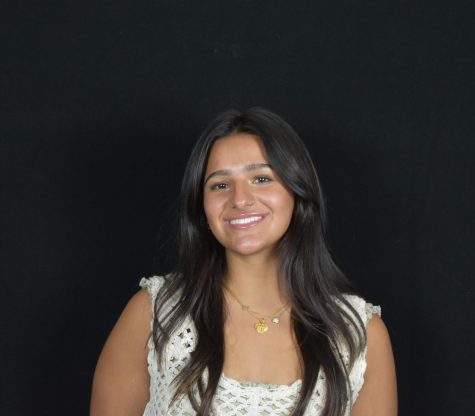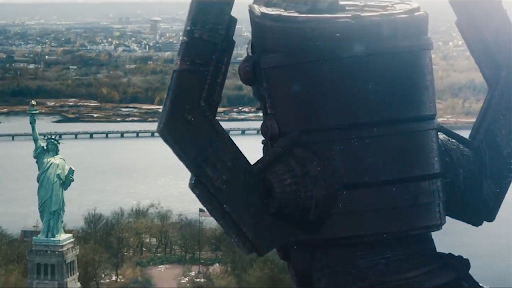The people you sit next to in class can change your life, but not in 2020.
As we have returned to in-person school, students and teachers alike find a major lack of interaction during class time.
In a normal school year, the people you meet in new classes can become some of your best friends, or at least “school friends”― the people you may never see outside of school, but who you have the time of your life with in first-period science class. Now, “school friends” are a thing of the past. Whether it is the masks or the three-feet-apart seating, 2020 has not made it particularly easy to be outgoing at school.

Personally, I have experienced this in my classes. There has been less group work and class discussions because most teachers try to use all of their in-person instruction time to lecture and teach the hardest curriculum. But, there are definitely exceptions. My Spanish and government classes have had the most interaction. Spanish is the type of class where a lot of speaking and collaboration is involved. So, everyone has to interact with each other. In a way, it forces us to get to know our classmates more quickly.
In AP Government, there are a lot of discussions about current events, especially with the upcoming election. My peers and I have differing political opinions, and we have had to learn how to communicate respectfully, which can be difficult when the American political world is incredibly polarized right now.
What we are all experiencing is a completely new image of school that everyone has to get used to— teachers included. They have also seen a major shift in school socialization. Student participation is at an all-time low, to the point where teachers have to wait for classes to speak up rather than quiet down.
In AP Government, there are a lot of discussions about current events, especially with the upcoming election. My peers and I have differing political opinions, and we have had to learn how to communicate respectfully, which can be difficult when the American political world is incredibly polarized right now.
What we are all experiencing is a completely new image of school that everyone has to get used to— teachers included. They have also seen a major shift in school socialization. Student participation is at an all-time low, to the point where teachers have to wait for classes to speak up rather than quiet down.

Faith Vigil, says that in her freshman AVID classes, “[Students] don’t engage at all. I really want the kids to engage, but it’s like pulling teeth to get them to talk to each other or to talk to me. And I think too with freshmen it’s because they don’t know each other. They’re not going to talk to each other because they’re already nervous… So it’s that whole element too.” Although it is more obvious with freshmen, math teacher Mr. Anderson has noticed this shift in his classes as well.
“One, students are masked up, which just kind of makes it difficult to interact with others. Two, we have fewer students in the class, and they have to sit farther apart. Three, I’m sure that there’s less opportunity for group learning in the classes,” said Anderson. “For sure teachers are feeling a little bit of the pressure to maximize the instructional value of the class time, which means less opportunity for more informal interactions from student to student.”
Mr. Anderson also gave his students an opportunity to go outside before fall break. “And I overheard several students say it was really the first time or a year that they had had the opportunity to interact.”
Generally, teachers agree that navigating student interaction is yet another challenge to overcome, but we just need to find ways to “bridge that gap,” says math teacher Ms. Swain .
It has been a learning process, but there is improvement every week as teachers find ways to make classes more engaging in a hybrid setting and as students find ways to adapt to our “new normal.”

Trisha Balani is a senior, an editor at Nest Network and a devoted Swiftie. Trisha wants to help Nest Network grow by teaching other writers the skills...





